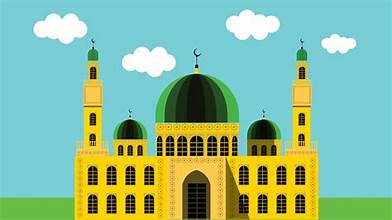Islamic
The world of graphic design is a vast canvas where creativity knows no bounds. In this ever-evolving field, artists often draw inspiration from diverse sources, and one such timeless and awe-inspiring source is Islamic architecture. Among the many architectural wonders that have captivated the world, minarets stand tall, both literally and metaphorically. These towering structures are not just physical embodiments of Islamic templates faith but also serve as templates for graphic brilliance. In this blog, we will explore the majestic world of minarets and how they can inspire graphic designers to create stunning visual masterpieces.
- The Symbolism of Minarets: Minarets, with their towering presence beside mosques, hold deep symbolic meaning in Islamic culture. They are not merely architectural elements but also spiritual symbols representing the connection between earth and heaven. Incorporating this symbolism into graphic design can add layers of meaning to visual compositions, making them rich and profound.
- Intricate Islamic Geometric Patterns: Islamic architecture is renowned for its intricate geometric patterns, and minarets are no exception. The geometric designs adorning minarets are a testament to the mathematical precision and artistic elegance inherent in Islamic art. Graphic designers can draw inspiration from these patterns to create visually stunning graphics, incorporating intricate geometric shapes and symmetrical designs.
- Calligraphy as Art: Arabic calligraphy, often seen embellishing minarets, is a unique form of art in itself. The fluidity and grace of Arabic script lend a sense of sophistication to any design. Graphic designers can experiment with incorporating calligraphy into their work, adding a touch of cultural richness and aesthetic appeal.
- Play of Light and Shadows: Minarets, especially during different times of the day, create captivating plays of light and shadows. The interplay between sunlight and the architectural details of minarets can be a valuable lesson for graphic designers. Understanding how light and shadows work can help in creating visually dynamic and engaging designs.
- Color Palette Inspiration: The color palette used in Islamic architecture, including minarets, is often rich and vibrant. Earthy tones, deep blues, and shades of gold are commonly found. Designers can draw inspiration from these color schemes to create visually appealing graphics that evoke a sense of warmth and cultural depth.
- Integration of Nature: Many minarets are surrounded by lush gardens, creating a seamless blend of architecture and nature. Graphic designers can experiment with incorporating natural elements into their designs, whether it’s through the use of botanical illustrations or the integration of organic textures, to create harmonious and balanced compositions.
- Modern Interpretations: While drawing inspiration from traditional minarets, graphic designers have the opportunity to create modern interpretations. Blending traditional elements with contemporary design trends can result in unique and captivating visuals that pay homage to the rich heritage of Islamic architecture while appealing to a modern audience.
